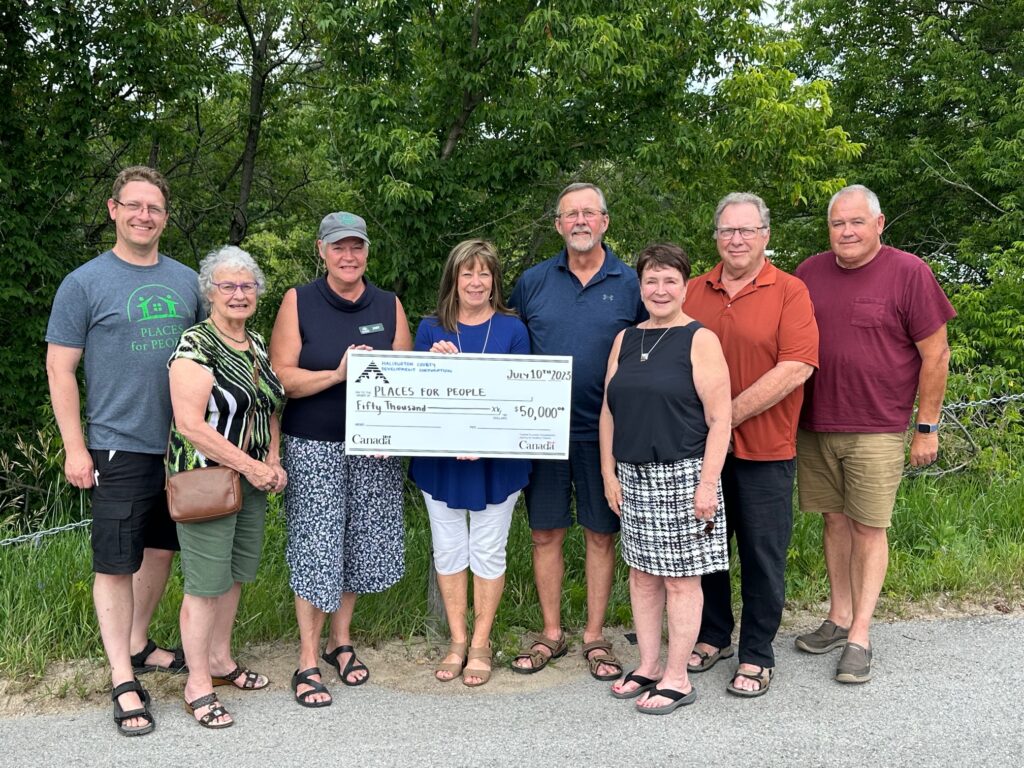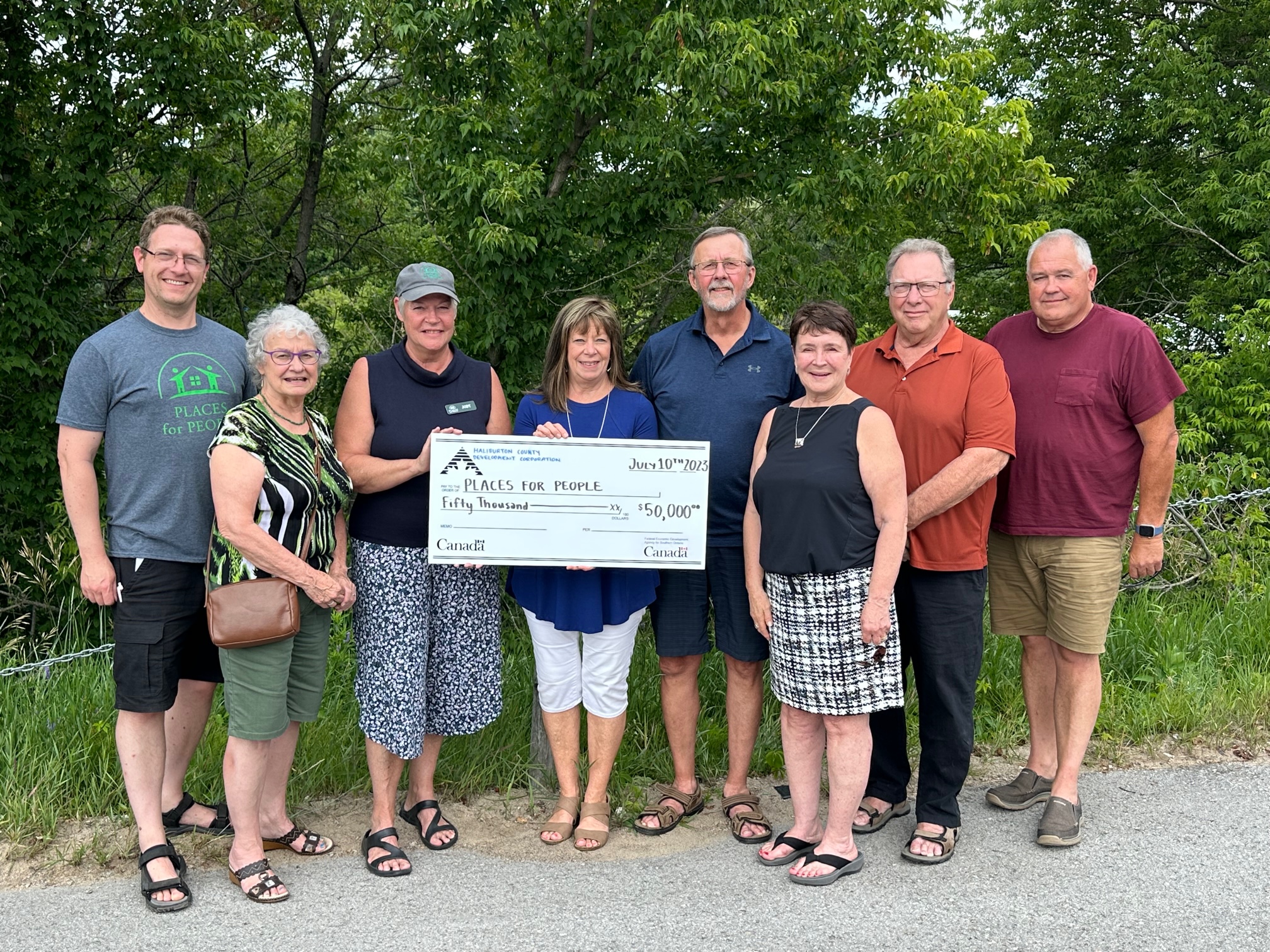Investors are an essential piece of the community bond puzzle. But who are they? What’s important to them? What do they value? What do they need to know about you and your project to make the decision to invest?
The answers to these questions are unique to each organisation and project — and Tapestry clients find those answers through stage two of our process working together — but to give you a glimpse into the minds and motivations of community bond supporters, we sat down with three different investors and asked an important question: Why did you buy?
Here’s what they told us.
The community development organisation looking to publicly support affordable housing
When Haliburton County, Ont.-based affordable housing provider Places for People launched a community bond raise earlier this summer, one of the very first investors snapped up $50,000 worth of bonds — a pretty significant chunk of the $850,000 goal. That investor was the Haliburton County Development Corporation (HCDC), and executive director Patti Tallman says it was HCDC’s longtime faith in Places for People’s work that made investing a no-brainer. “Knowing the affiliation with Tapestry…we felt very comfortable in that investment,” Patti adds.
After working with Places for People for many years — HCDC has loaned the organization money in the past for its affordable housing work — Patti says the community bond campaign was a welcome opportunity to publicly support Places for People’s work. “We wanted to be able to show that HCDC is a huge supporter of the concept of what Places for People is and what they do,” says Patti. “To be able to help launch the program right from the get go, it’s maybe going to [encourage] more people to think, Yeah, I can make an investment here.”

HCDC typically invests in businesses in Haliburton, so an investment in a non-profit is “unique and different” from their other work, Patti says. It was a new concept for others, too: Patti says in some of the local media coverage, reporters called the investment a donation, which is not the case. All community bond investors receive their principal investment back, with interest.
The interest HCDC earns from their investment will go back into its programs supporting economic development in the county, like its Local Initiatives Program — the only program of its kind hosted by a community development corporation — which provides non-repayable grants to nonprofits contributing to Haliburton County’s resiliency and vibrancy. Community bonds are meant to build community wealth, and HCDC’s relationship with Places for People is a great example.
The individual investor who believes in helping her neighbours out
After Deb Alore retired from her job in public health, she began to get more involved in community advocacy in Kamloops, B.C., which she’s called home since 1987. When she started going to general meetings and potlucks hosted by the Kamloops Food Policy Council, she met Lindsay Harris, the council’s food policy implementation lead. She’d also heard of Myles Pruden’s work in the community on net-zero, affordable housing construction.
So when Lindsay and Myles came together to start another organisation, Propolis Housing Cooperative, to build new affordable housing in the community, Deb took note. And when Propolis launched a community bond raise, she was in. “I respect them very much. I think those folks have done great things with other projects,” Deb says. “I just wanted to be a part of something positive and solution-based. And given that I felt the people involved were really reputable, I just thought, I can’t not support this. I need to do this."

As a longtime Kamloops resident, Deb can see firsthand how challenging the housing market is. “We’ve had our share of financial challenges too, but I’ve never felt like I was in danger of losing my shelter because of the cost,” she says. As someone with the means to help her Kamloops neighbours, Deb feels a responsibility to do so.
Deb invested in the Worker Bee bond, a minimum $1,000 bond with 2.5 per cent interest paid at the end of a three-year term. This is the first community bond Deb has invested in, but she doesn’t think it will be the last. One factor that limited the size of her investment this time around, though, was that it couldn’t be held in an RRSP (some community bonds can be held in RRSPs and TFSAs, but for Propolis’s first raise, their bonds are not eligible). “I’m retired and a lot of my savings are in RRSPs,” she says. “I had to [use] non registered money that I didn’t need for other things.”
But Deb says she’s not overly concerned with the returns. “For me,” she says, “the investment piece of it was just sort of incidental. It was all about being a part of something positive, a positive change. The fact that I may earn a little bit of interest by loaning the Propolis group a bit of money over the next three years, that’s a bonus. But that is certainly not what drove me to be involved.”
The foundation with a national scope and a commitment to impact investment
Toronto-based Inspirit Foundation has invested in a number of community bond campaigns, among them SolarShare, a cooperative that owns 52 commercial-scale solar power projects across Ontario.
Jory says Inspirit is attracted to the “clean and simple” nature of community bonds: investors buy a bond, and their principal investment is repaid with interest after a predetermined term, usually a few years. “Comparing that to private equity deals, comparing that to social impact bonds, it’s just simpler. I think that’s certainly an advantage of it,” Jory says.

Inspirit isn’t necessarily deterred by more complicated investments — Jory looks for good investments in solid ideas and projects, and focuses less on the format, he says. But Inspirit does tend to invest in projects and organisations with measurable or tangible outcomes. “Most of the stuff that we look at is pretty concrete, and we were able to see or even interact with end users,” he says.
Part of why Jory is a connoisseur of impact investment formats is Inspirit’s commitment to a 100 per cent impact investment portfolio — whereas some foundations make more traditional investments without ESG considerations in order to earn returns for their granting programs. “Since Inspirit exists to create a more inclusive and pluralist society, our investments need to generate returns that transcend financial outcomes for our foundation and maximize stakeholder value,” reads Inspirit’s investment policy statement.
Jory predicts Inspirit will continue to invest in community bonds, and that he’ll have more and more to choose from. “I get the sense that more and more nonprofits are looking at the model and wondering if it’s workable [for them].”

